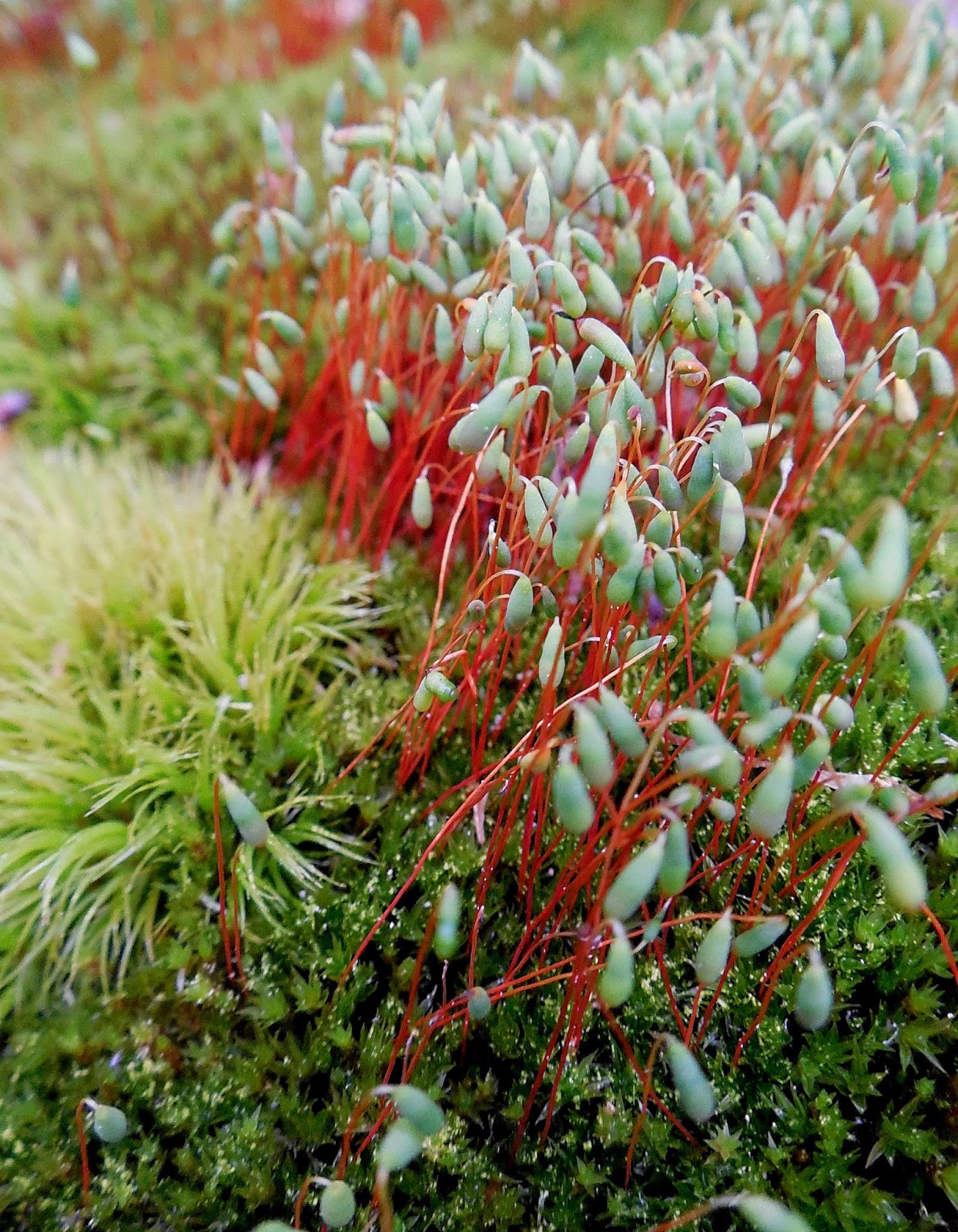The azalea in your yard likely originated in the orient, but you can find an NC native version in the woods right now (Rhododendron periclymenoides).
Here's fringetree, Chionanthus virginicus.
The world of mosses is fascinating up close.
Blueberries and huckleberries grow abundantly in our NC forests. I'm not sure which this is. Occasionally we get enough to top a bowl of cereal, but usually the wildlife beats us to it.
The ferns have almost finished their unfurling. I count at least six species in our woods, and in a future post I'll attempt to catalog them all.
The dogwoods are beginning to fade, but we have enjoyed abundant splashes of white through the woods for a few weeks now (Cornus florida).
This is bellwort, in the Uvularia genus, not sure what species.
Here's Toad Flax, I'm guessing Nutallanthus canadensis.
For years I suspected we had Paw Paw, a native fruit tree. And this, I believe, is it. Improved cultivars can be found for planting in the home orchard (Asimina triloba).
Finally, in the interest of creating a comprehensive record, here is a mediocre shot of a fairly uninteresting flower: Antennaria solitaria. [4/9/2016 update: I now believe this is Antennaria plantaginifolia]
One limitation of my point and shoot camera is that it won't focus on some of these small blossoms in the macro setting. A workaround I've discovered is to focus the camera on a leaf or the ground, then hold the focus (button pressed halfway) and aim the camera on the subject I want to shoot. Sometimes I have to experiment with "pre-focusing" on subjects of different colors to get the colors right on the desired subject.
Here's a description of my wildflower "hunting" techniques and the references I use to identify them:
http://timberwalkers.blogspot.com/2015/05/how-to-find-native-wildflowers-and.html
Here's a description of how I take photos:
http://timberwalkers.blogspot.com/2013/07/how-to-take-half-decent-photos-of.html










No comments:
Post a Comment